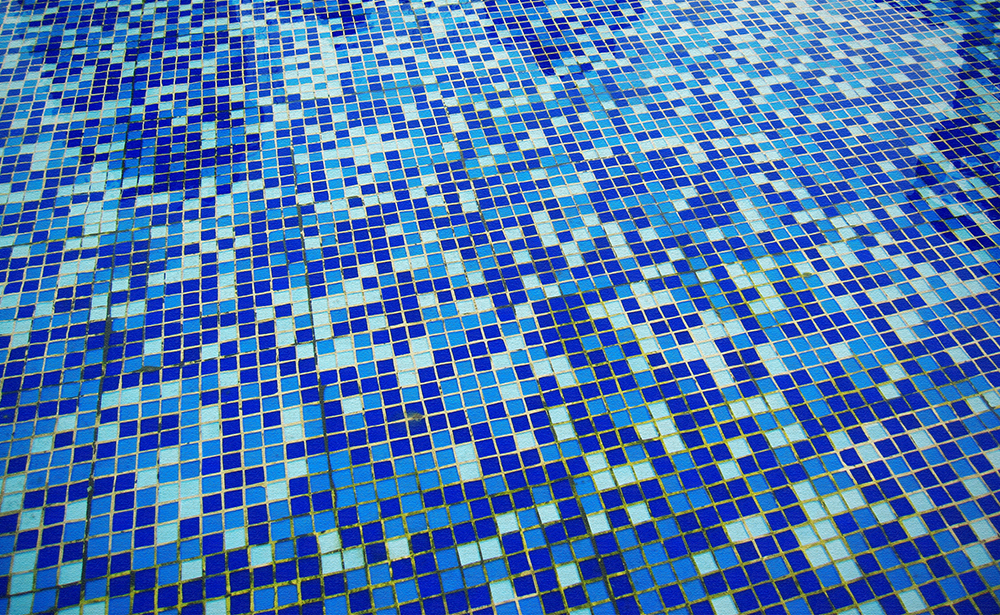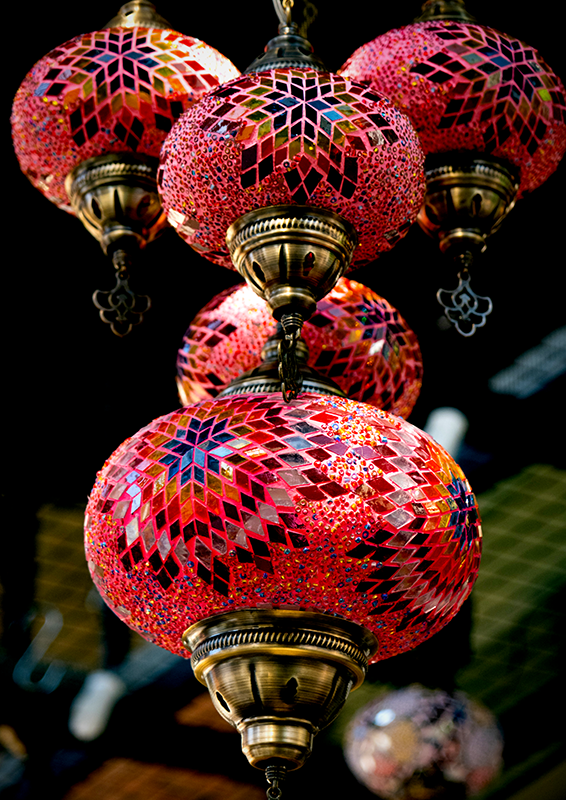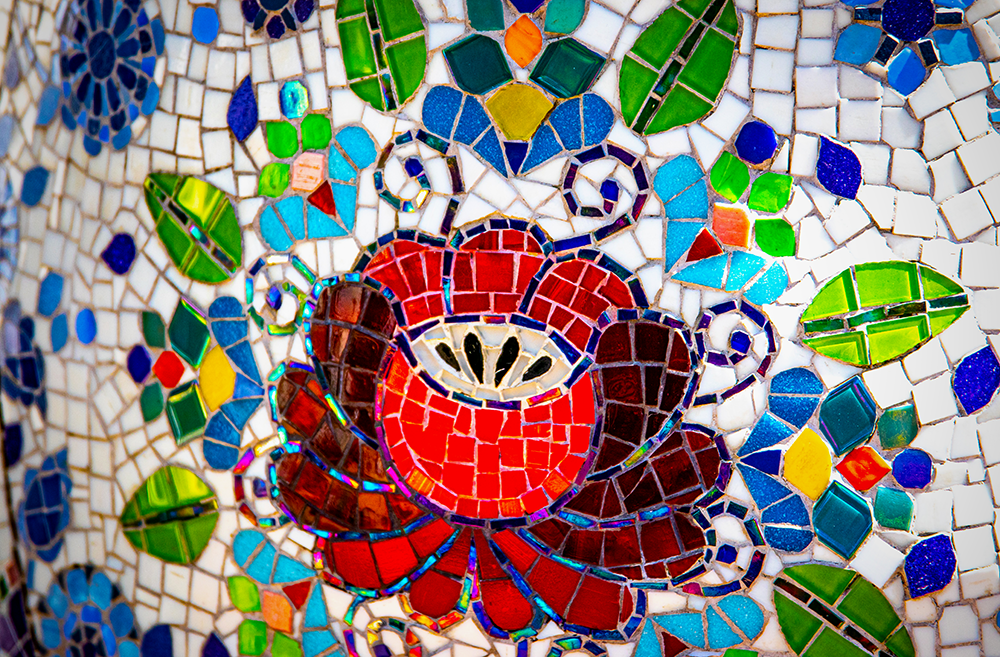Dive into the enchanting world of mosaics, where art transcends simple beauty to become a testament to human ingenuity and creativity.
From the sprawling mosaics of ancient Rome to the vibrant installations in contemporary cities, this art form captivates with its ability to piece together tiny fragments into breathtaking masterpieces.
Mosaics are not just art; they are a historical narrative told through shards of colored glass, stone, and other materials, each piece a pixel in a stunning visual story.
They have adorned everything from ancient architectural marvels to modern public spaces.
Created with small pieces of colored glass, stone, or other materials, known as tesserae, these pieces are meticulously assembled to produce designs that are both beautiful and durable.
Let's explore this creative art form!
Key Takeaways:
- Mosaics are a form of art that involves assembling small pieces of colored glass, stone, or other materials to create a pattern or image.
- Historically, mosaics have been used for both decorative and functional purposes, prominently in Roman, Byzantine, and Islamic art.
- Modern mosaics continue to evolve, incorporating new materials and techniques, and are used in both public and private spaces.
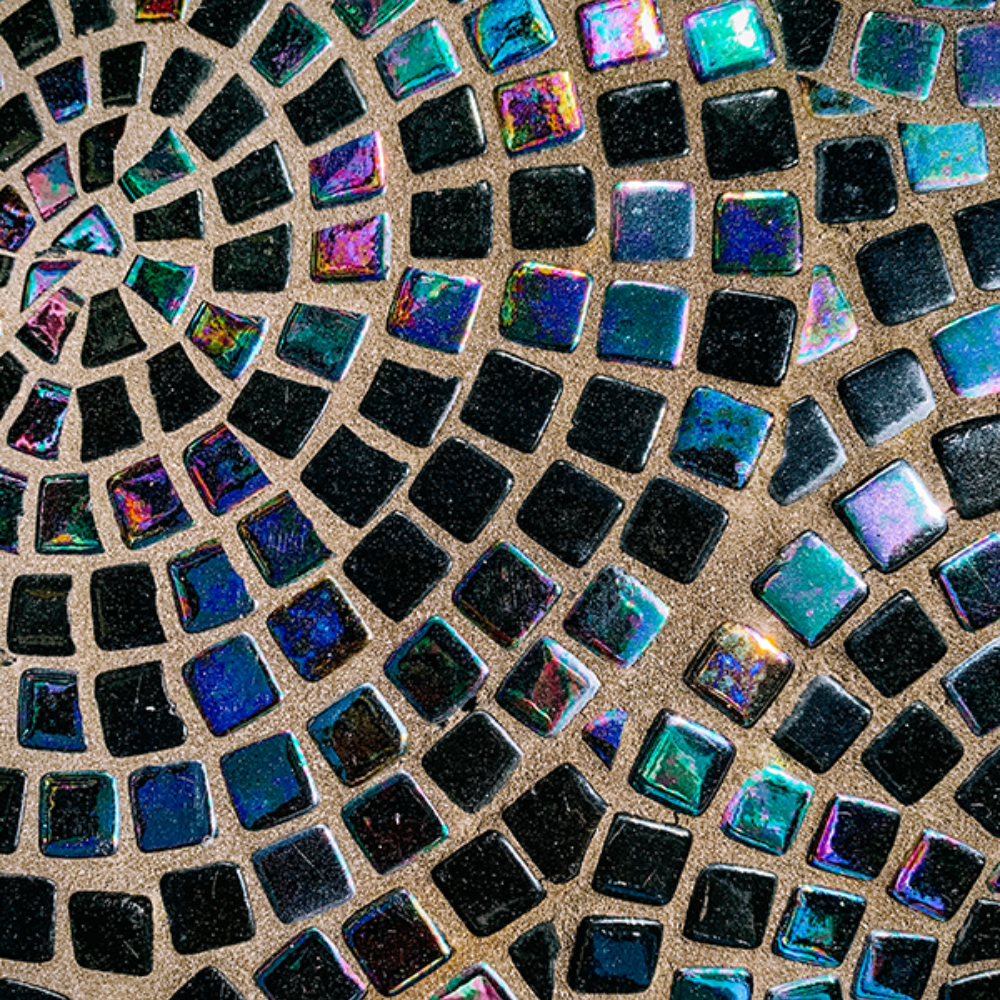
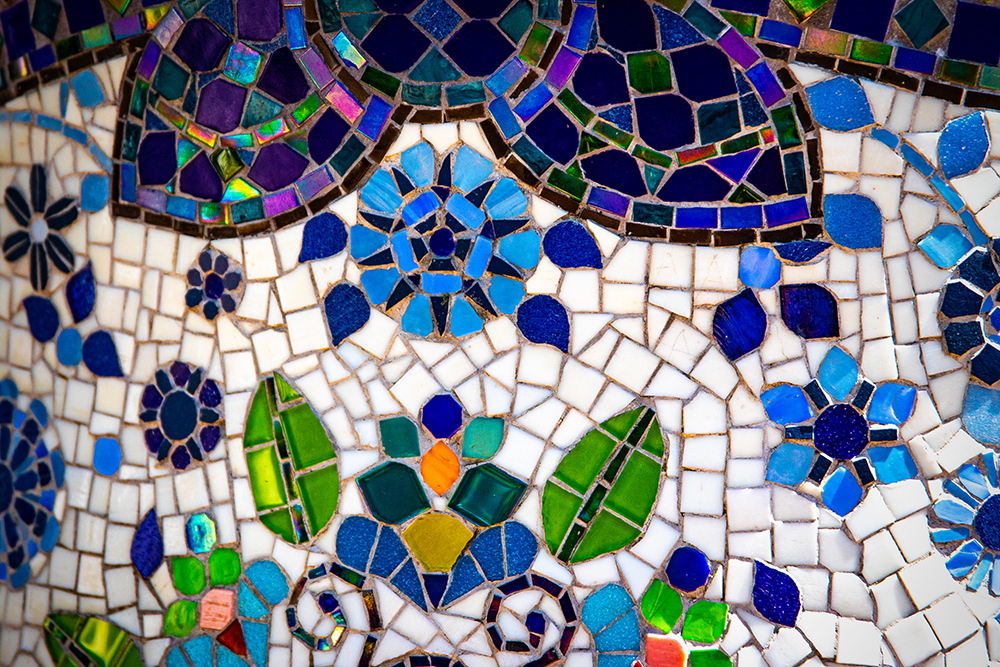
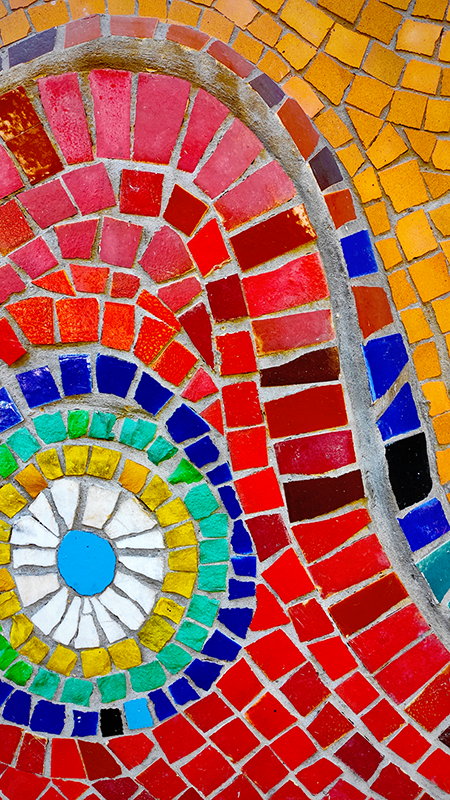
Historical Roots of Mosaic Art
The earliest known examples of mosaic art date back to the 3rd millennium BC in Mesopotamia.
These ancient mosaics tended to use pieces of colored stones, shells, and ivory to decorate temple buildings and other important structures.
Mosaic art flourished significantly in the Greek and Roman periods, where it was primarily used for decorating homes and public spaces.
Roman Mosaic Art
Roman mosaic art is renowned for its sophisticated depiction of scenes from everyday life, mythology, and nature.
Typically found in the homes of the wealthy, these mosaics served as both floor mosaics and wall decorations.
The impressive golden mosaic of a large dirt courtyard in a Roman villa highlights the luxury and craftsmanship of that era.
Byzantine Mosaics
Byzantine mosaics, known for their religious content and extensive use of gold tesserae, decorated the interiors of domes and apses in many early Christian churches.
The Hagia Sophia in Istanbul contains some of the most famous examples of Byzantine mosaic art, featuring intricate Christian scenes and figures with a high artistic quality that played a significant role in religious devotion.
Islamic Mosaics
Islamic art introduced a new chapter in the history of mosaics, characterized by geometric patterns and the avoidance of figural representations due to religious beliefs.
These mosaics adorned the interiors and exteriors of mosques and palaces, creating complex patterns that emphasized the infinity of creation.
Techniques and Materials
Creating mosaics involves several steps, starting from the design concept to the placement of tesserae.
Traditional materials like ceramic tesserae, colored stones, and glass tesserae are commonly used, although modern mosaics may incorporate newer materials like art glass and other recycled elements.
Evolution of Mosaic Art in Religious Buildings
Mosaic art has been a significant element in decorating religious buildings, showcasing the deep intertwining of spirituality and art.
In the Byzantine Empire, golden mosaics adorned the interiors of grand cathedrals, reflecting light and creating an ethereal atmosphere that aimed to uplift the spiritual experience.
These mosaics often depicted Christian mosaics, including scenes from the life of Christ and the saints, crafted meticulously to serve both decorative and catechetical purposes.
The use of luminous gold tesserae in these settings exemplified how mosaic art was employed to symbolize divine light and eternal beauty within sacred spaces.
In contrast, Islamic mosaics showcased geometric and floral patterns, adhering to the aniconic traditions of Islam, which avoids figural representations in religious art.
The intricate mosaic designs in mosques and palaces across the Middle East and North Africa were not just decorations but were imbued with symbolic meanings.
These patterns were designed to represent the infinite nature of Allah and to create a contemplative environment for worshippers.
The Alhambra in Spain and the Dome of the Rock in Jerusalem feature extensive mosaic decorations that highlight the cultural exchange and the shared techniques between Christian and Islamic art forms during the middle ages.
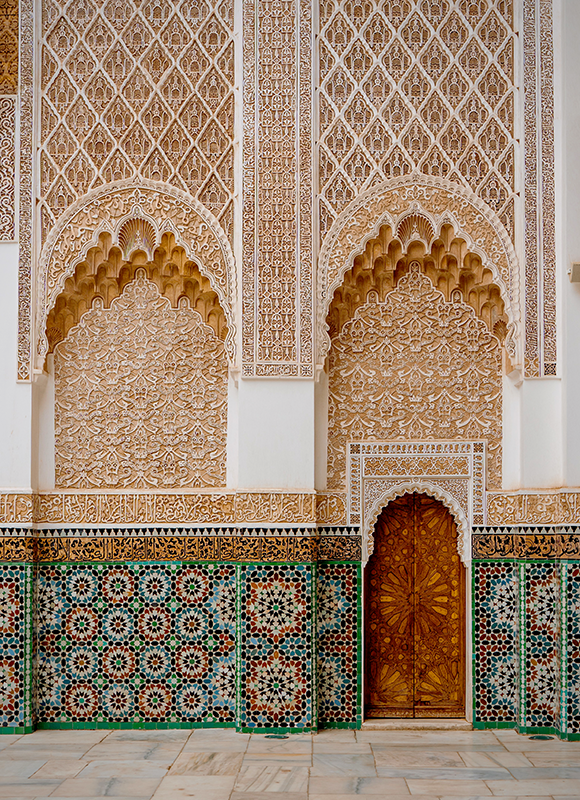
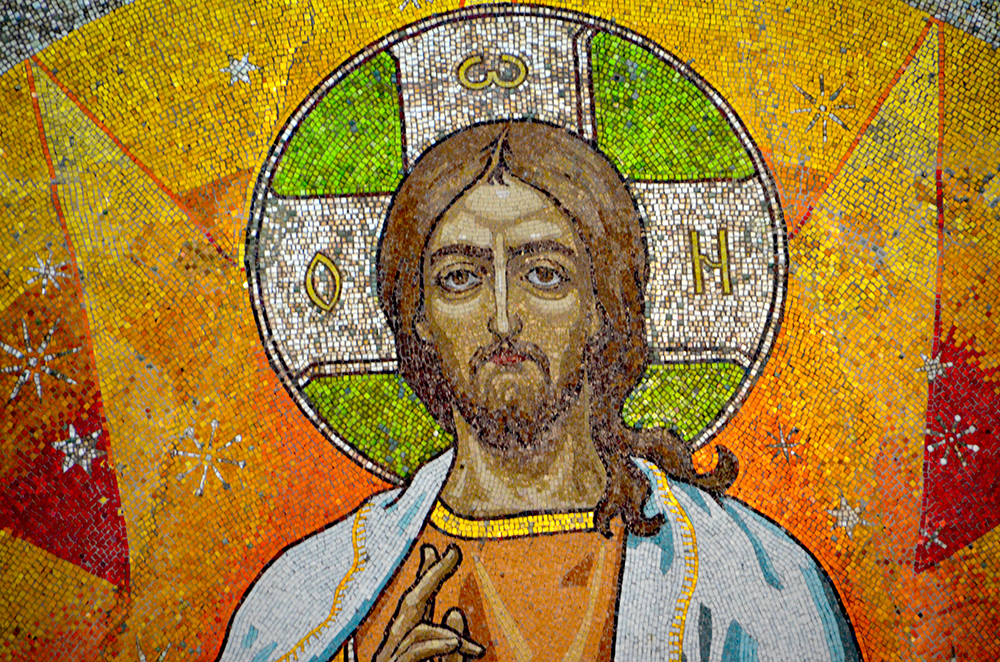
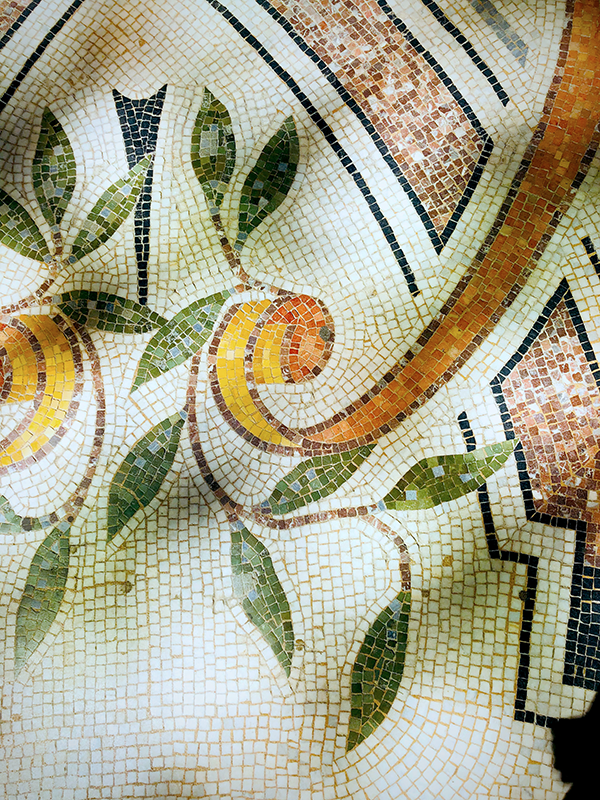
Mosaic Art in Contemporary Architecture
Mosaic floors have become a significant element in contemporary architecture, blending functionality with aesthetic appeal.
Architects and designers often incorporate beautiful mosaic pavement into both commercial and residential buildings, creating stunning visual effects.
The use of decorative mosaics in entryways, as wall decoration, or even as ceiling mosaics, showcases how this ancient art form has been adapted to modern needs.
These designs often draw inspiration from the intricate patterns of Roman and Byzantine influence, proving that historical art techniques continue to inspire brilliant architect solutions in today's building projects.
In addition to traditional spaces, mosaic art has found its way into innovative architectural designs such as the integration of tile covered benches surrounding urban parks and the incorporation of floor mosaic in public transportation hubs.
These applications not only enhance the aesthetic quality of these spaces but also contribute to their functionality and public engagement.
American mosaic artists exist who specialize in these large-scale projects, pushing the boundaries of how mosaic work is perceived and utilized in the architectural realm.
Their work ensures that each piece is not only a part of the infrastructure but also a standalone piece of art that tells a story or captures a cultural essence.
Mosaic Techniques in Street Art
Street artists have increasingly embraced mosaic art to create beautiful artwork that integrates seamlessly into urban environments.
This form of artistic expression not only beautifies the cityscape but also offers a durable alternative to traditional graffiti.
Mosaics in street art often feature vibrant colors and complex patterns, capturing the dynamic essence of city life.
Artists like Invader exemplify this trend, where the fusion of pixelated video game characters into the urban landscape bridges digital culture with traditional mosaic techniques.
Moreover, the use of mosaics by street artists serves as a form of storytelling, reflecting social and political themes relevant to the local community.
Unlike paint, the permanence of mosaics makes them a powerful medium for making lasting statements in public spaces.
This method has been used to commemorate historical events, celebrate cultural heritage, and even highlight social injustices, thereby enriching the communal urban experience and fostering a sense of identity and belonging among residents.
Mosaics in Temple Building
Mosaics have long been integral in the decoration of sacred spaces, particularly in temple building, where they create beautiful artwork that enhances spiritual and aesthetic experiences.
Temples across various cultures have utilized mosaics to depict religious narratives, celestial scenes, and intricate geometric patterns that symbolize the universe's complexity.
These artworks not only serve a decorative purpose but also function as a medium for storytelling and spiritual reflection, making the temple a focal point for community and cultural identity.
The use of mosaics in temples can be traced back to ancient civilizations, such as the Romans and Byzantines, who employed mosaics extensively in their religious architecture.
In contemporary times, this tradition continues as modern artisans and architects incorporate mosaics in temple designs to preserve cultural heritage and connect with historical practices.
The integration of modern techniques and traditional motifs allows for the creation of stunning, durable art pieces that attract worshippers and art enthusiasts alike, ensuring that the temple remains a cornerstone of cultural preservation.
Mosaics in Digital Media and Advertising
Mosaics have transcended traditional boundaries to become a vital part of digital media and advertising.
By integrating mosaic art into digital campaigns, advertisers can create beautiful artwork that captures the essence of their message in a visually engaging way.
This technique not only enhances the aesthetic appeal but also increases viewer engagement, making advertisements more memorable.
Digital mosaics can be seen in everything from social media banners to interactive online ads, where they add texture and depth to digital designs.
Furthermore, the use of mosaics in digital media extends to video production, where mosaic patterns are used to create dynamic backgrounds or to convey complex stories through a collage of images.
This application is particularly effective in promotional videos and commercials, where the richness of mosaic art helps brands convey their uniqueness and artistic sensibility.
The fusion of ancient mosaic techniques with modern digital technology allows advertisers to craft compelling narratives that resonate with a contemporary audience, thereby enhancing the overall impact of their marketing efforts.
Mosaics in Environmental Art
Mosaics have transcended traditional boundaries to embrace environmental themes, helping artists create beautiful artwork that also conveys powerful messages about nature and sustainability.
These artworks often utilize natural materials such as stones, pebbles, and recycled ceramics, reflecting the environment's intrinsic beauty and the urgency of its preservation.
Environmental mosaic installations can be seen in public gardens, parks, and other natural settings, where they blend art with the landscape, encouraging viewers to reflect on their relationship with the natural world.
Moreover, environmental mosaics serve as a functional art form that promotes biodiversity and ecological awareness.
Artists strategically place these mosaics to not only enhance aesthetic appeal but also to create habitats for various species.
For instance, mosaic stepping stones and sculptures can provide shelter for small creatures, while wall installations can attract insects and birds, integrating art within the ecosystem.
This approach not only helps to create beautiful artwork but also plays a crucial role in educating the public about environmental conservation through artistic expression.
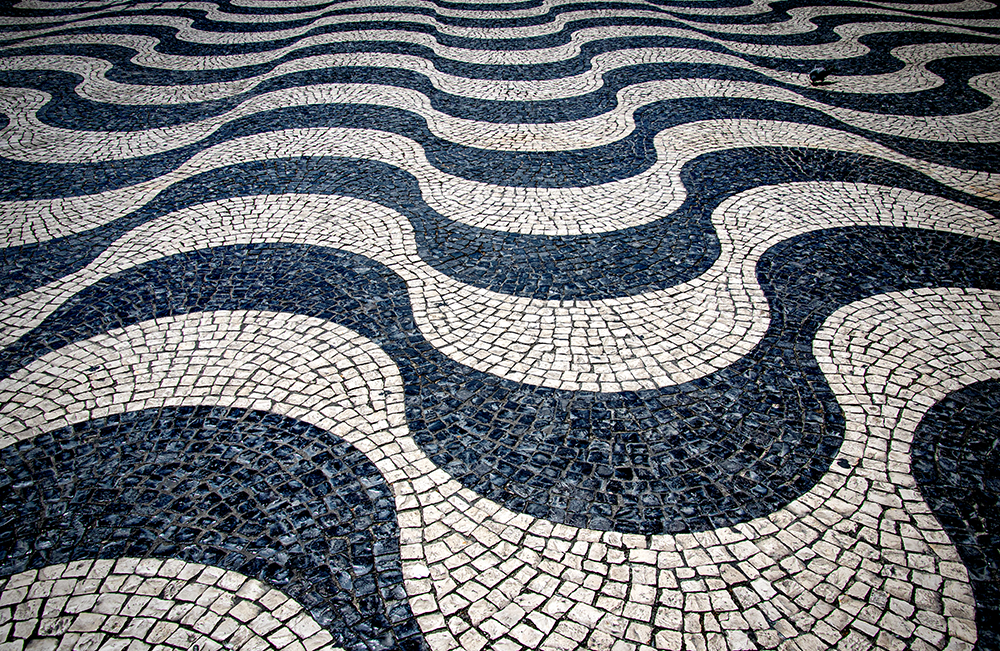
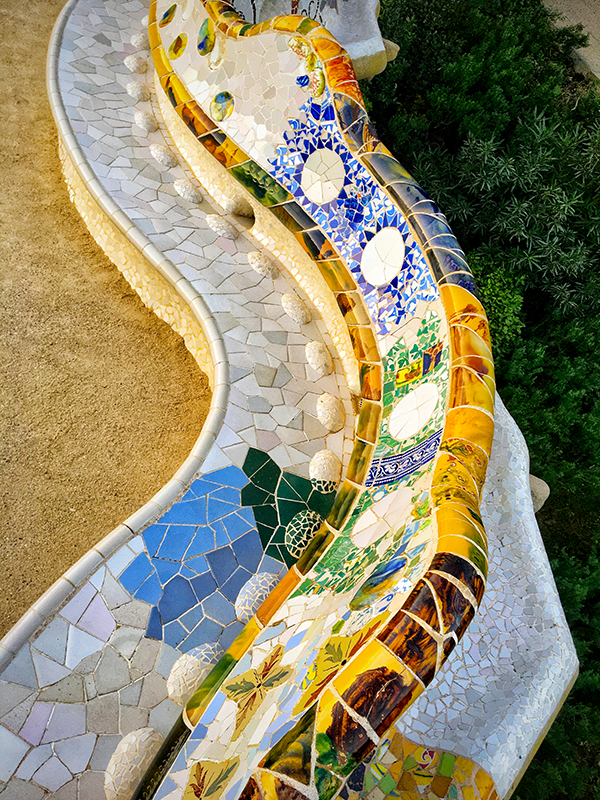
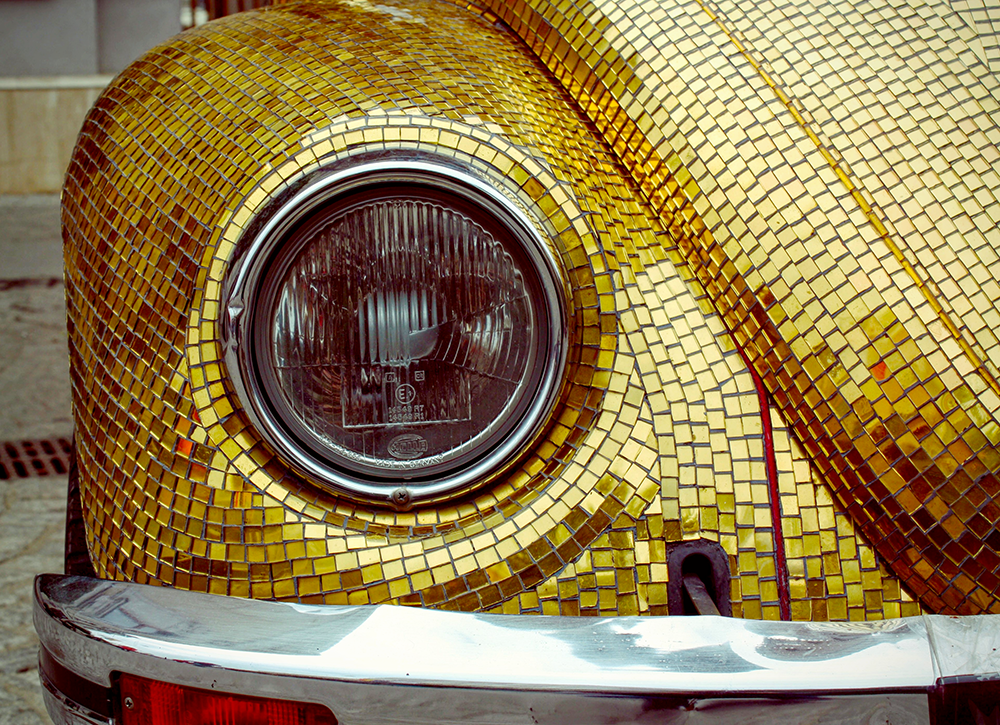
Mosaics in Fashion Design
In the fashion industry, mosaics have found a unique application, transforming ordinary garments and accessories into extraordinary pieces of wearable art.
Designers incorporate mosaic patterns using beads, sequins, and pieces of mirror to create beautiful artwork that catches the eye and tells a story.
This technique allows for a rich expression of cultural heritage and modern aesthetics, offering a tactile and visually dynamic element to high fashion and everyday wear.
The intricate details and vibrant patterns of mosaic-inspired pieces often reflect the meticulous craftsmanship and artistic vision of the designer.
Furthermore, the integration of mosaic art in fashion extends beyond aesthetics to embody the principles of sustainability and innovation.
Designers increasingly opt for upcycled materials and eco-friendly processes to assemble their mosaic creations, aligning with global trends towards more sustainable fashion.
For example, using broken pieces of discarded jewelry or scraps from the manufacturing process not only reduces waste but also provides a new life to materials that would otherwise be discarded.
This sustainable approach to creating beautiful artwork within the fashion industry highlights the versatility and adaptability of mosaic techniques across different creative domains.
Mosaics in Urban Renewal Projects
Urban renewal projects often leverage the power of art to rejuvenate and inspire communities, and mosaics have played a significant role in these transformations.
By incorporating mosaic art into public spaces, cities can create beautiful artwork that not only enhances the visual landscape but also fosters a sense of community and belonging.
Mosaics are particularly effective in urban settings due to their durability and the ease with which they can depict complex themes relevant to the local culture or history.
In many cities, mosaic murals have become landmarks, telling stories of the area's heritage and its people.
These projects often involve local artists and community members, which enhances the social value of the artwork.
For instance, a mosaic mural in a revitalized downtown area can serve as a focal point for gatherings and a symbol of local pride.
As urban areas continue to evolve, the role of mosaics in these settings becomes increasingly important, providing not just aesthetic value but also a tangible connection to the community's roots and aspirations.
Mosaics as a Tool for Educational Engagement
Incorporating mosaics into educational settings offers a unique, hands-on approach to learning that can engage students of all ages in the creative process and teach them about various historical periods and cultures.
By creating beautiful artwork through mosaics, students develop a tangible connection to the subjects they are studying, whether it's ancient history, geometry, or art theory.
This form of experiential learning can help deepen understanding and foster a lifelong appreciation for art and history.
Furthermore, the process of designing and creating a mosaic requires critical thinking, planning, and teamwork, which are valuable skills in any educational context.
Schools and educational institutions often undertake mosaic projects as a collaborative activity that culminates in the creation of a permanent installation on school grounds.
Such projects not only beautify the learning environment but also instill a sense of pride and accomplishment in students, making mosaics a powerful tool for educational and therapeutic settings.
Mosaics in Religious and Cultural Narratives
Mosaics have played a pivotal role in depicting religious and cultural narratives, particularly within the realms of the Roman Empire and Byzantine manuscript art.
In ancient times, mosaic floor designs in temple buildings were not merely decorative but served as a medium to convey spiritual stories and celestial symbolism.
These artworks often featured scenes from mythology, basic figural work of deities, and intricate geometric patterns, each element carefully crafted to create a sacred atmosphere conducive to worship and reflection.
In addition to their religious significance, mosaics have been instrumental in preserving Jewish artists' contributions to cultural heritage.
For instance, other important Venetian mosaics in historical synagogues illustrate biblical tales and Judaic traditions, bridging the gap between art and religious devotion.
The detailed craftsmanship and vibrant imagery not only enhance the spiritual experience but also serve as educational tools, teaching visitors about the deep historical roots and rich cultural narratives embedded within the mosaic art form.
Mosaics in Performance and Cultural Venues
Mosaics have transcended their traditional roles to become central artistic features in various performance and cultural venues.
For instance, a mosaic dragon greets visitors at the entrance of an Asian cultural center, symbolizing power and wisdom through vibrant, intricately laid tiles.
This use of thematic mosaic work in cultural buildings not only enhances the visual experience but also embeds deeper cultural significances into the architecture, making each visit a rich, immersive encounter.
The ability to create beautiful artwork that resonates with cultural themes allows mosaics to serve as both decoration and storyteller.
Furthermore, in concert halls and theaters, designers often employ mosaics to create captivating backdrops that enhance the performance environment.
These might include scenes from Byzantine manuscripts or depictions inspired by Greek masters, rendered in stunning mosaics that complement the themes of performances.
Such artistic endeavors not only beautify the space but also enhance the acoustic properties of the venue, proving that mosaics can be both visually and functionally significant.
The collaboration between mosaic artists and venue designers exemplifies how ancient art forms can find new life and purpose in modern settings, enriching the cultural landscape.
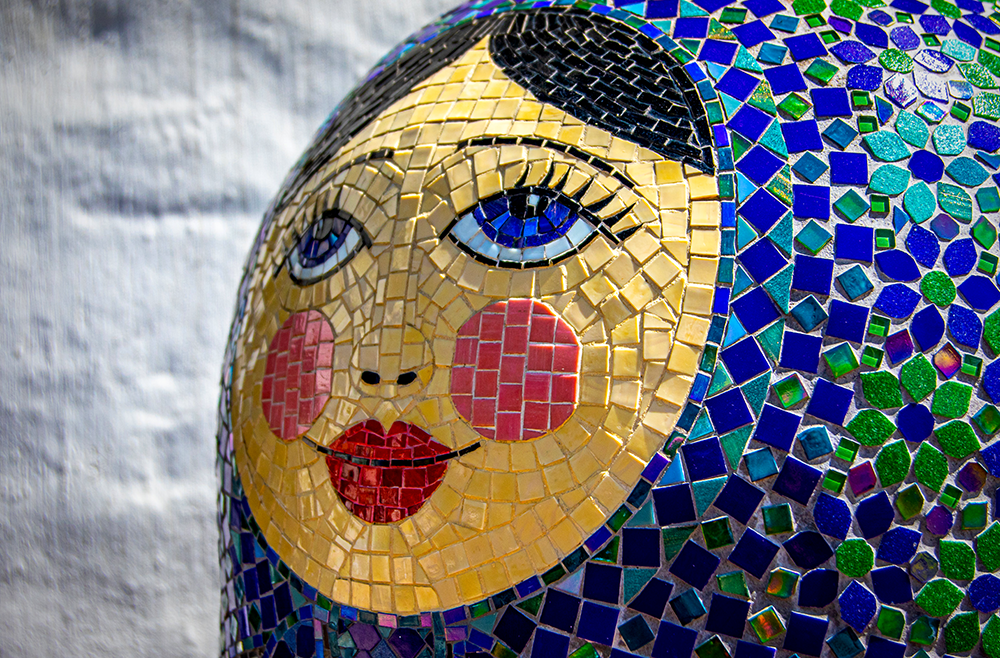
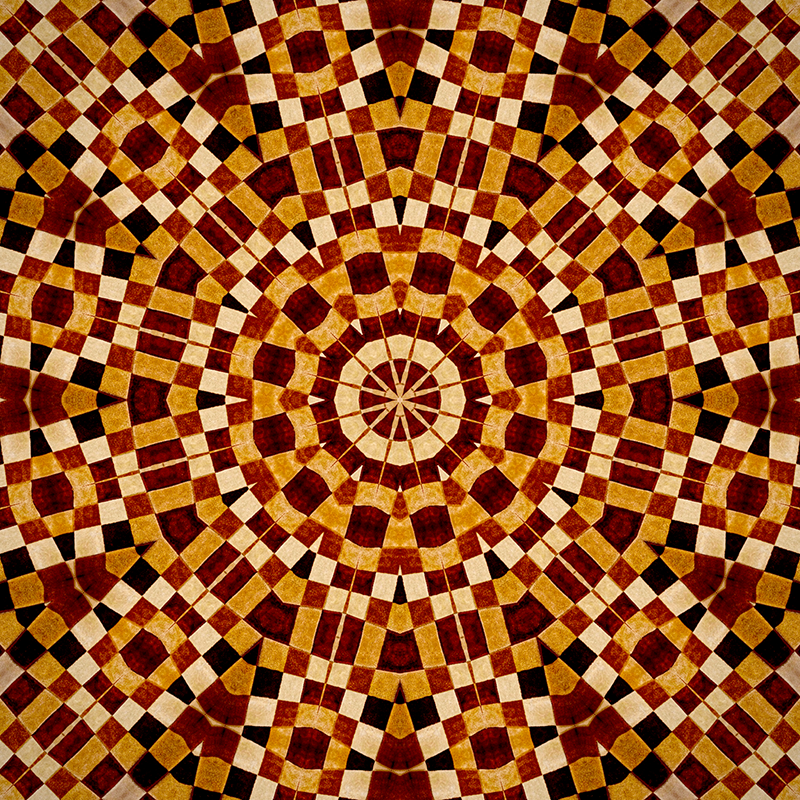
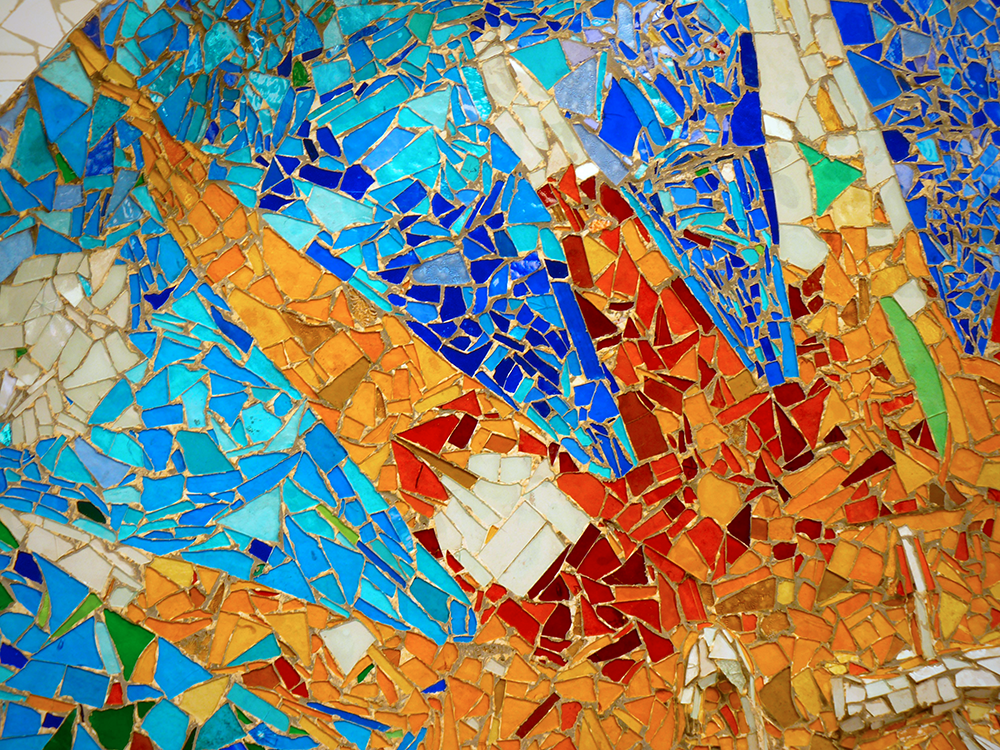
Influence of Eastern Artistic Traditions
The influence of Eastern artistic traditions on modern mosaic art is profound and far-reaching, integrating elements from the Byzantine, Islamic, and even Far Eastern aesthetics into contemporary designs.
This fusion is evident in the works of many American mosaic artists, who incorporate the established patterns of eastern artistic influences with modern artistic expressions.
For instance, the intricate and colorful designs often seen in traditional stone and tile work from the Middle East have inspired artists to blend these traditional techniques with Western themes, creating unique and culturally rich mosaic pieces.
Moreover, the resurgence of interest in techniques such as pebble mosaics, a style prevalent in ancient Greek and Roman art, has been revitalized by modern artists who infuse it with Eastern motifs.
This stylistic synthesis is not only a homage to the mosaic art's historical roots but also a way to preserve and promote mosaic as a dynamic form of art.
For example, contemporary installations often feature a blend of figural wall mosaics and abstract patterns that draw heavily from both Western and Eastern artistic traditions, demonstrating the global and timeless appeal of mosaics.
Modern Mosaics in Public and Private Spaces
Today, modern mosaics are not confined to historical or religious contexts but are also seen in public parks, street art, and home decor.
Artists like those involved in the public park system composed of tile-covered benches surrounding vibrant community spaces, showcase how mosaics can transform public areas into interactive art galleries.
Mosaics as a Popular Art Form
Mosaics continue to be a popular art form due to their durability and the limitless potential for creativity.
They are used in educational settings for craft projects and by professional artists to create large-scale installations.
The versatility of mosaics is evident in their application in both fine art and decorative art.
Role of Mosaics in Modern Architecture
In modern architecture, mosaics are used to add color, texture, and personality to buildings and spaces.
Architectonic elements located in contemporary buildings often feature mosaic panels that provide a narrative or a visual impact that enhances the architectural design.
Mosaics in Garden Art
Garden art often incorporates mosaics in the form of stepping stones, flower pots, and sculptures.
These elements add a touch of personality and artistry to gardens and outdoor spaces, making them more engaging and visually appealing.
Conservation and Restoration
The conservation and restoration of ancient mosaics are crucial for preserving this art form for future generations.
Techniques have evolved to protect these artworks from environmental threats and human-caused damages, ensuring that they continue to inspire awe with their beauty and historical significance.
Mosaics in Educational & Therapeutic Settings
Mosaics are also used in educational and therapeutic settings, providing a creative outlet for students and individuals seeking emotional healing.
The process of creating mosaics can be therapeutic and offers a sense of accomplishment when the final piece is assembled.
Embracing the Timeless Allure of Mosaic Art
The art of mosaics is a profound testament to the enduring human desire to create and connect across time and cultures.
These intricate compositions not only decorate spaces but also weave a vibrant tapestry of historical and contemporary narratives.
Mosaics are a dynamic and enduring form of art that spans various cultures and epochs.
From ancient civilizations to modern times, mosaics have decorated spaces both sacred and secular, showcasing the artistic human spirit through colorful and intricate designs; mosaics continue to captivate and inspire with their detailed craftsmanship and vibrant aesthetics.
As we encounter mosaics, from ancient ruins to modern-day murals, we are reminded of our shared heritage and the limitless potential of human creativity.
Let us continue to celebrate and preserve this captivating art form, ensuring it inspires generations to come with its beauty and historical significance.

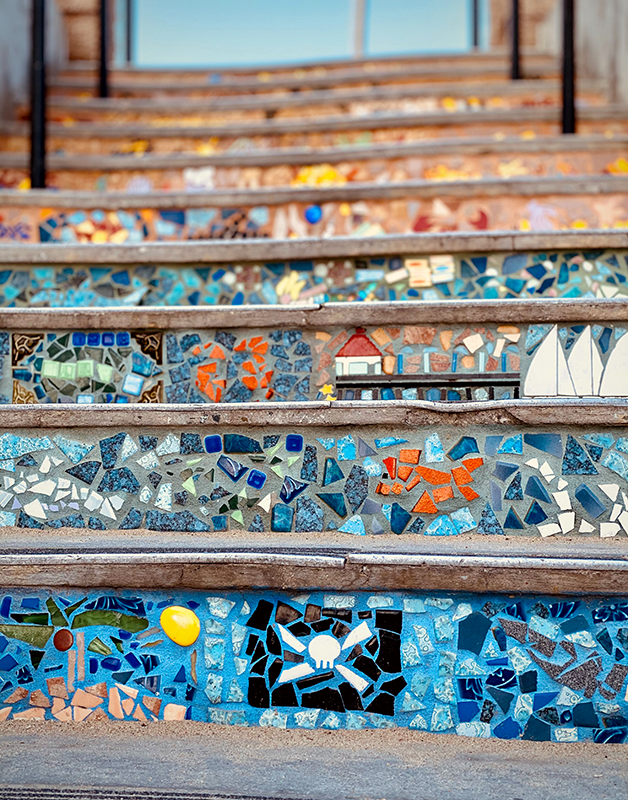
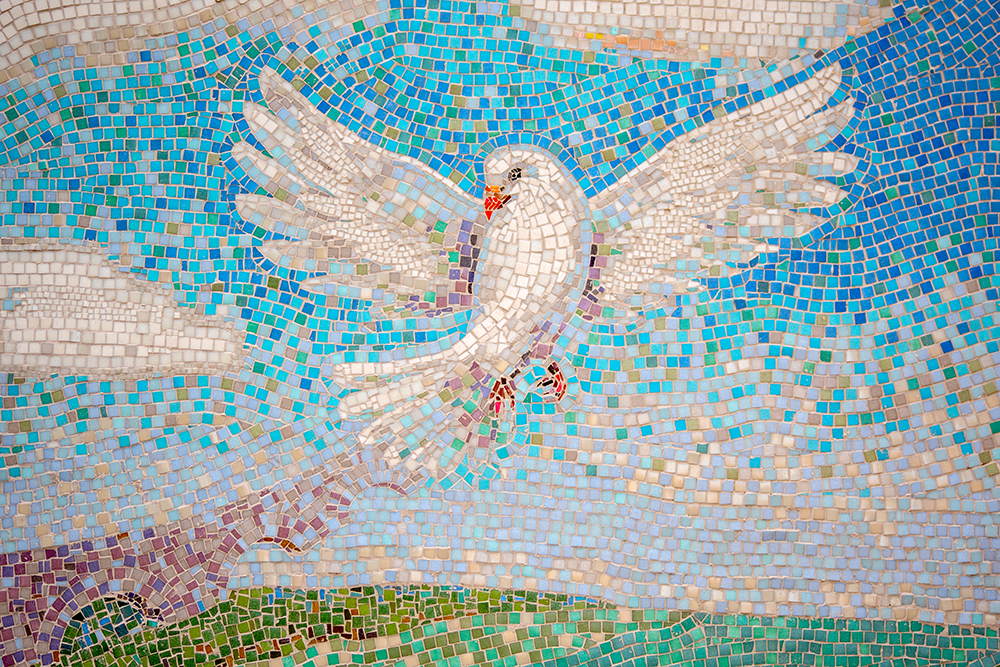
Mosaic FAQs
Welcome to the Mosaic FAQs section!
Whether you're a budding artist, a curious historian, or simply an enthusiast of this intricate art form, you've come to the right place.
Here, we delve into some of the most commonly asked questions about both traditional and modern mosaics.
From the integration of contemporary materials to the restoration techniques of ancient masterpieces, and insights into the vibrant world of today's mosaic artists, we've got you covered.
Let's explore the colorful and textured world of mosaics together, uncovering the old and discovering the new.
Can modern materials be used in mosaic making?
Yes, modern mosaics often incorporate a variety of materials including recycled glass, ceramics, and even digital components, allowing for innovative and sustainable art creations.
Are there any famous modern mosaic artists?
Yes, numerous contemporary artists specialize in mosaic art, creating everything from small-scale decorative pieces to large public installations that transform community spaces.
How are damaged ancient mosaics restored?
Restoring ancient mosaics typically involves meticulous cleaning, re-adhering loose tesserae, and sometimes filling in missing sections with carefully matched materials to preserve the original artwork as faithfully as possible.
What tools and materials are essential for starting mosaic art?
For beginners, essential tools include mosaic cutters or nippers, adhesive, grout, a base to apply your mosaic (like a tabletop or wall surface), and various tesserae such as tiles, glass, or stones. Safety equipment like gloves and goggles is also recommended to protect against sharp edges.
Can mosaic art be used for outdoor projects?
Absolutely! Mosaics are excellent for outdoor projects due to their durability and resistance to weather elements. Using materials like porcelain or vitreous glass tiles and ensuring proper sealing and grouting can make your mosaic withstand the elements beautifully.
What are the different styles of mosaic art?
Mosaic art encompasses a variety of styles, from the ancient Roman and Byzantine mosaics, which often featured intricate patterns and religious themes, to modern abstract and photorealistic mosaics. Artists may choose styles based on the techniques involved, such as the direct or indirect method, and the materials used.
How long does it take to complete a mosaic project?
The time it takes to complete a mosaic project varies widely depending on the complexity and size of the design. Small projects might take a few hours, while larger, more detailed works can take weeks or even months. Patience is key in mosaic art, as it is a meticulous and labor-intensive process.
Is mosaic art suitable for beginners?
Yes, mosaic art is very accessible for beginners. Many community centers and art schools offer mosaic workshops that cover basic techniques and provide materials. Starter kits are also available that include everything needed to create a simple mosaic, making it easy for anyone to get started.
What is the best way to learn mosaic art techniques?
The best way to learn mosaic techniques is through hands-on workshops and classes, which provide direct instruction and allow you to ask questions in real-time. Online tutorials, books, and videos can also be valuable resources for learning different techniques and tips at your own pace.
How can I preserve and maintain my mosaic artwork?
To preserve and maintain mosaic artwork, it should be cleaned regularly with mild soap and water to remove dirt and debris. For outdoor mosaics, applying a sealant every few years can help protect against moisture and fading. Avoid using harsh chemicals or abrasive tools that can damage the tesserae or grout.



Eager to see how artists can create mosaics? Check out Tekniq's video!
Want even more content about creativity and art?
Be sure to check out all of our creative chronicles!
Interested in exploring the world of mosaics?
Check out some of our other articles:
-Is a mosaic a form of painting?
-What materials can you use for mosaics?
-What are the 3 main types of mosaics?
-What are the elements of mosaic art?
-What is another word for mosaic?
